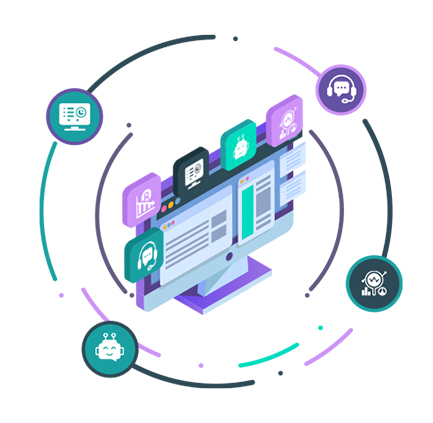IVR (Interactive Voice Response) has become one of the highly sophisticated services used by enterprises and organizations. It allows the users to interact with a company’s host system via a telephone keypad or by speech recognition. A lot of large scale enterprises and organizations have been using this technology from the early 1980s and they were able to leverage this technology for their benefit in terms of operational costs of handling customer services. IVR, which was previously an expensive and complex technology, has become less complex and accessible over the course of time during the past few decades. With IVR becoming the latest addition to hSenid Mobile APIs a whole new dimension of subscriber services have been surfaced. Now with hSenid Mobile IVR API anyone can create their own IVR service that matches their requirements.
This blog is a walkthrough of the steps of creating an IVR app with hSenid Mobile APIs and aims to give you an insight of creating one app from scratch.
IVR enables any user to create and deploy an application without the necessity of coding. On contrary to widely used text based APIs like SMS , USSD and CaSS IVR API facilitates interactive communication mechanism that adds a more human feeling to the service. We use prerecorded voice prompts and menus to provide information to subscribers and receive responses from them via keypad dialing. Initially when a subscriber dials an IVR number, the call is received by the relevant network operator. Then the telco routes the call to the relevant application and sends the response to the listener.
This all may sound like too much technicality but creating an IVR application is a simple process with hSenid Mobile APIs. An app can be created within a few minutes and applied to approval.
Simple steps involving in creating in IVR app
- Create a compressed file containing all the audio files which need to be played.
- Create a flow using JSON response.
- Generate md5 key according to the API guide.
- Provisioning
There are few more things to consider at configuring audio clips before they can be played via IVR systems, these requirements might change according to the associated telco service provider. For more details about audio clip configurations you can contact hSenid Mobile Developer Evangelists via devspace@hsenidmobile.com or . These are the sample configurations for a specific APAC operator.
- Rate: 8000Hz
- Format: 32-bit float wav
- Channel: Mono
- Algorithm: A-Law
- Zipped file size: Should not be more than 30 MB
You can use SoX (Sound Exchange) as an open source command line tool for the conversion of your audio file. This tool is capable of converting most of the audio formats to play via IVR.
Once the audio clip is ready you can move to the next step of app creation. There are two options available for you to choose on how your app is going to be presented. As a developer you can choose a single audio response or a simple IVR menu which enables the subscriber to be connected to a single audio clip or several audio clips accordingly. Furthermore, the developer can simply rename the audio file and/ or re-arrange to a desired format that fits the purpose.
The key generation is done after hosting the files (JSON & Compressed File) on the specific telco platform. You have to include the generated md5 key under API configurations for IVR while provisioning is done. Once you get the application approved the audio files can be changed as per your requirement on timely basis and sustain a progressive application.
The future of IVR applications are showing clear signs of major involvement in existing telco network assets such as SMS, USSD etc. Mashing up of different APIs with IVR will sure to bring out new innovative services that developers can monetize on, as we at hSenid mobile is constantly working on further development of this newest addition to our set of APIs. Developers will be able to define their own web sockets and store user inputs and maybe use different narrating techniques to come up with more exciting services in future.








